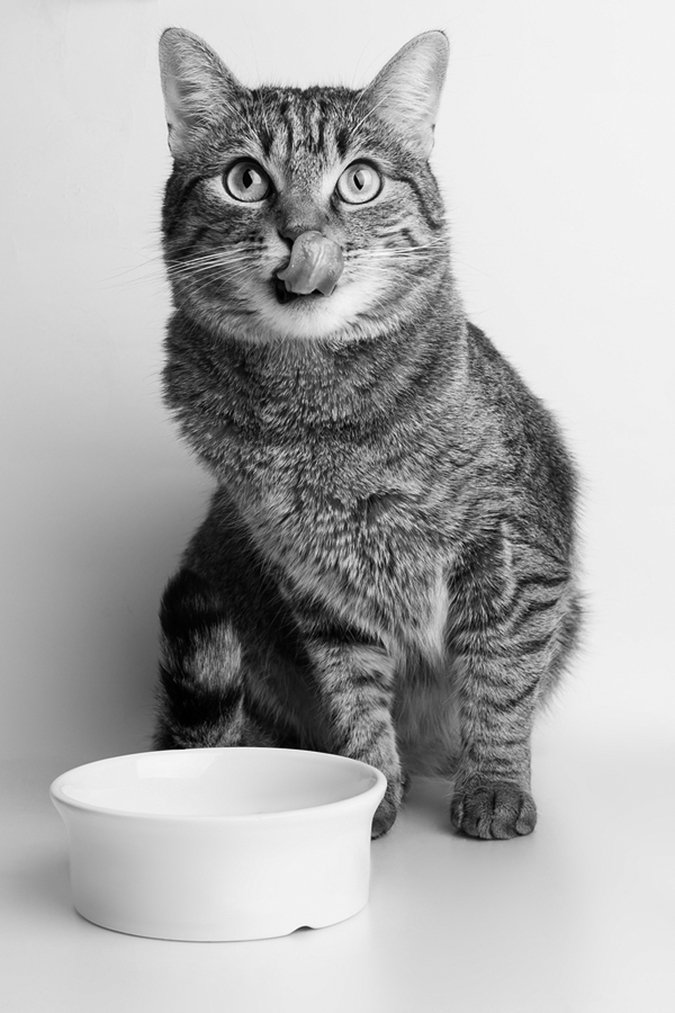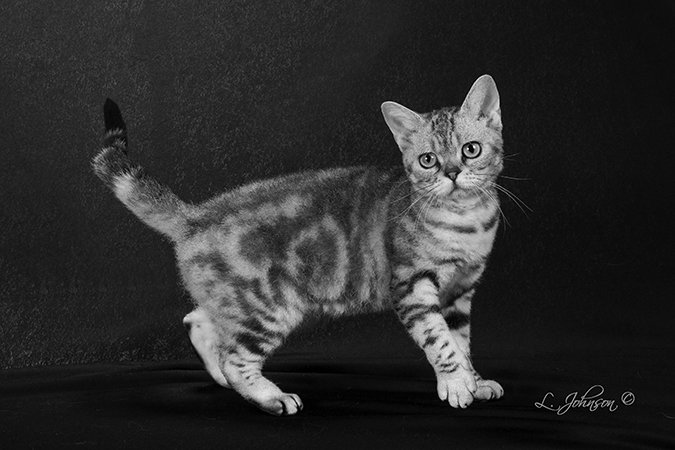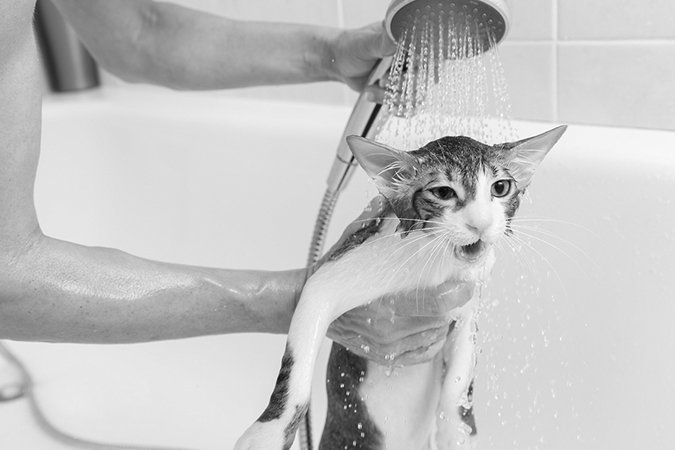Although your cat’s fur may be problematic when you’re vacuuming, it plays an essential role in skin protection, temperature regulation and perception. Plus, it feels so good to touch.
Fur, primarily made of the protein keratin, grows from follicles in the skin. While human follicles each grow a single hair, animal follicles may grow many. Each follicle has an oil gland to lubricate the skin and hair, and to keep the coat lustrous.
If your cat’s coat turns dull and dry, you may suspect a medical problem and make a veterinary appointment. Meanwhile, you might also want to check the labels on his food.
It’s a Common Problem
While a poor coat or flakiness can indicate a health problem, the primary reason is low-fat diets — particularly for cats on weight-reduction plans, says nutritionist Joseph Wakshlag, DVM, Ph.D., at Cornell University College of Veterinary Medicine. “Poor coats are fairly common. Perhaps 10 percent of a general veterinarian’s patients have poor coats.”
The typical scenario: “The pet is overweight or obese, and the owner decides to try a low-fat diet. The cat then secretes less oil, and his coat becomes lackluster.” Dr. Wakshlag’s better solution: “Rather than switching to a diet containing only 5 to 10 percent fat, stay with a good quality food that contains above 12 per cent fat — just feed your pet less of it.”
Dermatologist William H. Miller, VMD, Medical Director of the Companion Animal Hospital at Cornell, also weighs in on the importance of a high-quality diet: “Any animal’s coat will be impacted by a poor diet, such as poorly prepared home cooking. The coat will lose its sheen, shed more easily and might even change color. While home-cooked diets can be an excellent way to feed a pet, they need to contain appropriate vitamins, minerals, fats, proteins and carbohydrates.”
bluebeat76 | Bigstock

Dr. Wakshlag, president of the American College of Veterinary Nutritionists, evaluates the nutrients that promote healthy coats in this Q & A:
Q. What’s the primary dietary ingredient for a healthy coat?
A. Cats need fat for a healthy coat — especially linoleic acid, which helps hold the skin cells together. A poor diet may be lacking in vegetable oils that contain large amounts of linoleic acid. For cats, adding one-fourth to one-half teaspoon of corn or vegetable oil per meal may help resolve a dandruff problem.
Q. Which oils are best to add to the diet?
A. Oils are oils. In consideration of owners’ pocketbooks, corn oil can be significantly less expensive to buy than fish oil, yet provides similar benefits. Less expensive oils, such as corn oil, will add gloss and sheen to the coat, or alleviate flaky skin just as well as more expensive oils. However, for cats exhibiting itchiness or allergies along with a poor coat, fish oils containing omega-3s are more helpful than other oils in addressing that particular condition. They have anti-inflammatory properties and provide general benefits. Feeding your cat a therapeutic diet containing omega-3s may be an easier solution than adding those oils to the diet.
Q. What role does protein play in promoting a healthy, shiny coat? Is there a general rule on how much protein should be in an average cat’s diet?
A. Cats have a relatively high protein requirement: 24 percent to 26 percent dry matter. However, there are no studies showing that the amount of protein in a pet’s diet affects coat quality.
Q. What’s the effect of inadequate protein upon the coat?
A. Too little protein can result in a lower rate of hair regeneration and a sparser hair coat. The hair follicles might be temporarily arrested in their function. However, this would be observable only at the microscopic level and would not be obvious to the pet owner. There is also some association between amino acids and coat color in cats — in particular, a deficiency in phenylalanine can turn a black cat’s coat to brown.
Larry Johnson Photography

Q. What role do carbohydrates play? How digestible are they?
A. Although they are digestible, carbohydrates are not required in your cat’s diet and are not in any way a necessary component for a healthy coat. However, because carbohydrates derived from grains are relatively inexpensive, the addition of various grains, such as corn meal or ground rice, may help keep pet food affordable and nutritious for many people.
Q. What vitamins and minerals are essential to healthy coats? What role does each of these play, especially if they are too low in the diet?
A. Vitamin B facilitates skin cell replication and assists with tissue regeneration, so a vitamin B deficiency would impact the skin and coat in addition to other tissues. All pet foods are legally required to have sufficient levels of B vitamins.
For some pets, there is anecdotal evidence that adding extra B vitamins in the diet, including B6 (pyridoxine), B3 (niacin), choline and biotin, can help improve coats. As a result, some pet food companies have added extra B vitamins to their products.
135pixels | Bigstock

Zinc is also required in all pet foods. This requirement is in part due to a generic brand pet food in the 1980s that did not contain sufficient available zinc, resulting in poor quality coats among pets on this diet. AAFCO [Association of American Feed Control Officials] raised the zinc requirements to correct this situation.
Vitamin A is also essential for healthy coats. There are sufficient quantities in pet food, so deficiencies are rare. While pets with alopecia (hair loss due to arrested follicle function) may respond to additional amounts of vitamin A in their diet, I would hesitate to recommend vitamin A supplementation in cats. There is some evidence that cats fed an overabundance of foods that are too high in vitamin A—for example, cats eating all cow’s liver—can develop lesions in their vertebrae.
Q. Given today’s high quality pet foods, are supplements recommended?
A. Supplementation is generally only warranted if the animal needs a special diet or has some disease which impacts vitamin/mineral absorption or utilization. I recommend consulting your cat’s veterinarian prior to beginning any vitamin or mineral supplementation. However, owners who wish to supplement their pet’s diet for the purposes of improving coat quality may consider boosting the fatty acid levels in their pet’s diet, either by changing over to a higher fat commercial diet or by adding small amounts of oils to their pet’s current food.



